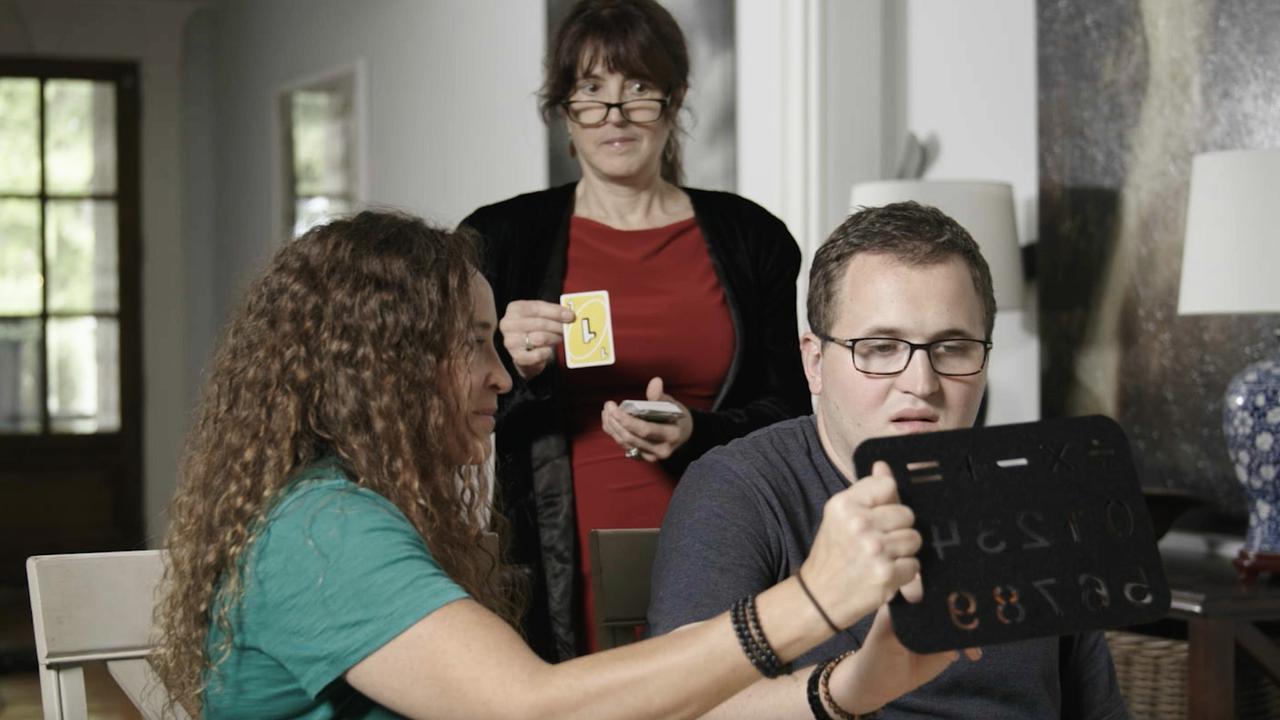Brendan McCarthy’s long road to his dream job
A refusal to take no for an answer landed graphic artist Brendan McCarthy his dream job.

For London-born graphic novelist Brendan McCarthy, Mad Max 2: The Road Warrior was the seminal cultural event of his young adult life. It was 1981, and the then 23-year-old was in Australia on a gap year. He could have been exploring Australia’s remote and desolate places but instead he was indoors, transfixed by director George Miller’s post-apocalyptic vision.
“I became obsessed by the film — seeing it more than 20 times — and couldn’t work out how it had had such a big effect on me,” says the 58-year-old, speaking to Review from his home in County Clare, western Ireland.
“It got to the point where I started to hang around outside George Miller’s offices in Sydney, hoping to meet him, which didn’t happen.”
For the next 16 years, McCarthy developed a successful career as a graphic novelist and a concept artist for film and television. But he never stopped trying to contact Miller, sending him letters and samples of work from time to time. In 1997, he received the phone call he had long hoped for.
“George asked if I’d be interested in developing a new Mad Max film with him. I obviously jumped at it, and over the course of a few years in Sydney we nutted out the story to Mad Max: Fury Road.”
When McCarthy appears at the Graphic festival at the Sydney Opera House next weekend, his story of obsession and persistence, culminating in a writing credit on one of this year’s most successful films, is likely to strike a chord with audiences. (He will appear both solo and in conversation with Fury Road co-writers Miller and Nico Lathouris on Sunday, October 11.)
It’s all a long way from the status of comic books during McCarthy’s childhood in England, when he says the medium was considered little more than a “juvenile pastime”. After school, McCarthy attended the Chelsea College of Arts and, along with the likes of Alan Moore, Neil Gaiman, Grant Morrison and Brian Bolland, was part of what became known in the comic world as the British Invasion of the 1980s.
“British artists were picked up by American publishers like DC Comics, and we brought much more mature storylines and a more sophisticated approach to comics, and it basically turned the industry on its head,” he says.
McCarthy’s opus includes a Bollywood-meets-Blade Runner comic titled Rogan Gosh (a play on the name of the popular Indian curry); the comic Freakwave, which has been described as Mad Max goes surfing, replete with giant floating headships and psychedelic pirates; and storyboard art and concept design on films such as Coneheads, Tim Burton’s Sweeney Todd, and Highlander 2: The Quickening.
It all equipped him to illustrate the visually rich world that Miller wanted for the fourth instalment of the Mad Max franchise, with each scene fastidiously illustrated as the story was written over two years. But the reliance on action and lack of dialogue was criticised by some.
“George’s philosophy for the films was that they should be completely understandable without dialogue. Anyhow, you are dealing with a post-apocalyptic world that is stripped down, basic and elemental; it is unlikely people are going to be giving huge speeches,” he says.
The project was famously delayed for another 15 years, due to a succession of issues including the 9/11 terrorist attacks, the exit from the film of the original Max Rockatansky, Mel Gibson, and the unexpectedly lush state of the intended set in Broken Hill, NSW (it was ultimately shot in Namibia). But McCarthy, who is nothing if not patient, is satisfied that the film lived up to the original vision. “My aim was to give to a new generation the experience I had with Road Warrior,” he says. “We had an agreement that if in the end we didn’t feel the material was up to it, we would scrap it.”
Rather than delighting in the recent slew of comic-book adaptations for TV and film, from the so-called Marvel Universe and the recent Fantastic Four movie to the upcoming second season of The Flash (Foxtel) and premiere of Marvel’s Jessica Jones (Netflix), McCarthy believes that the commercial success of the genre has led to lazy storytelling. “I have certainly got superhero film fatigue; I almost fell asleep through The Avengers: Age of Ultron,” he says.
“There is a blandness to many of these adaptations now. Many people have said to me when a film is genuinely thrilling, like Fury Road, you realise you’ve been putting up with lacklustre storytelling.”
While Mad Max 2 might loom as McCarthy’s biggest Australian influence, it is certainly not the only one. From his earliest travels he was inspired by Aboriginal art and culture, from the works of the Papunya Tula Western Desert artists, to books by maverick anthropologist Charles Mountford. This is reflected in his creation of an Aboriginal character in the Spider-Man: Fever series for Marvel Comics: Ms Ningirril, a sorceress. “You rarely get to see a really cool Aboriginal character in a comic,” he says.
McCarthy was also influenced by his friendship with pop artist Martin Sharp, whom he first discovered while reading Oz magazine in London in the late 60s. (He describes it as “the classic psychedelic underground countercultural magazine”.) McCarthy collected all of Sharp’s covers; meeting the artist years later, hie discovered Sharp had been collecting his work, too.
“He lived in a great big rambling house stuffed full of Mickey Mouse toys and Tiny Tim paraphernalia in Sydney’s eastern suburbs, but when I actually met him he pulled out loads of my comics — he knew my stuff, which was a really flattering discovery.”
McCarthy talks about Australia with great affection, but is not uncritical. “I used to get cross with Australia: Martin Sharp, for example, was not taken seriously by the Australian cultural establishment,” he says. “You have Sharp to thank for the fact that Luna Park and this giant clown face he painted — the craziest thing I’ve ever seen — was not demolished for yet another block of luxury flats.” But aside from the explicit advice McCarthy will no doubt wish to impart to the aspiring young artists and creatives attending the festival, his very presence on stage alongside Miller might carry the strongest messages of all: be patient, never give up, and don’t take no for answer.
Brendan McCarthy will appear at the Graphic festival on October 11 at the Sydney Opera House.



